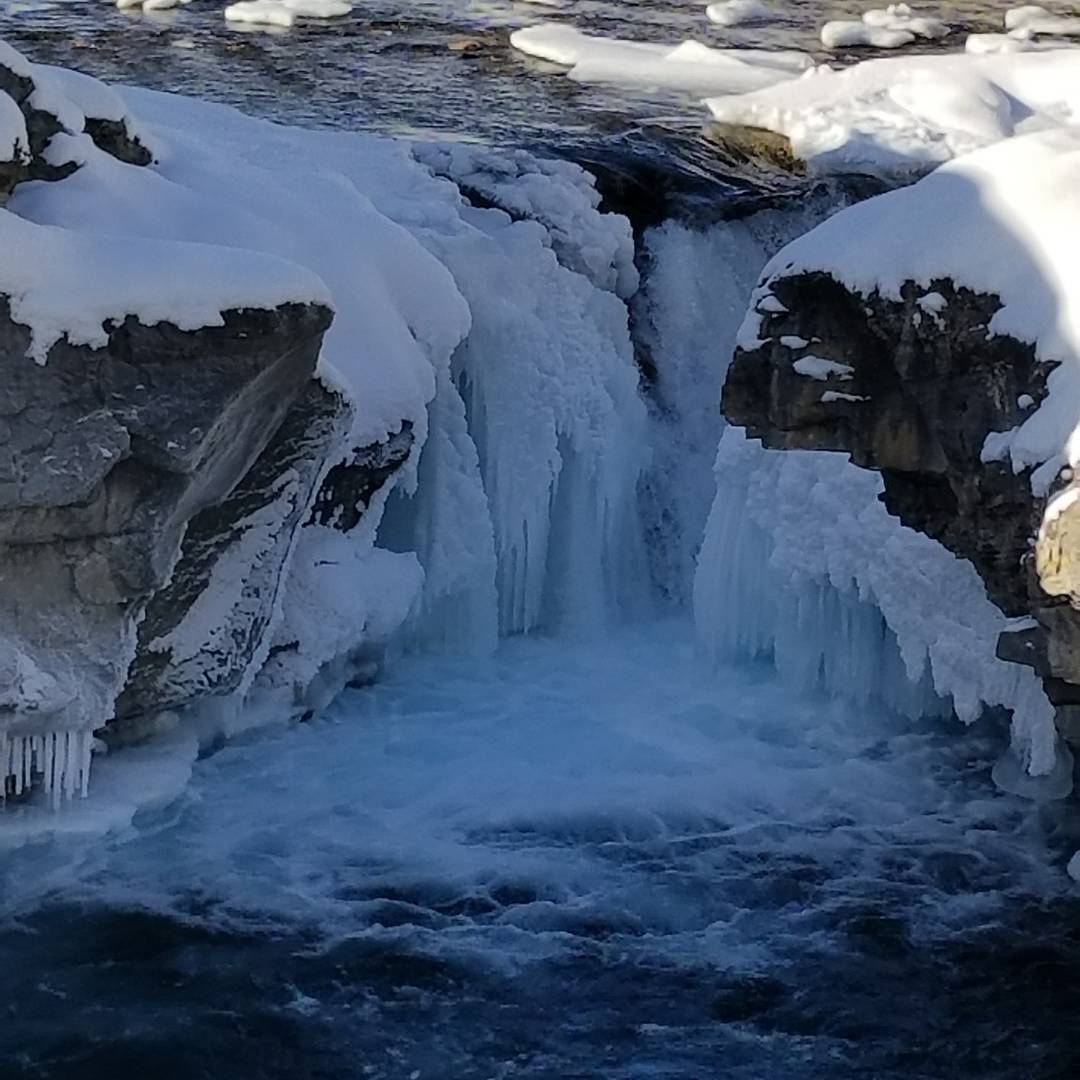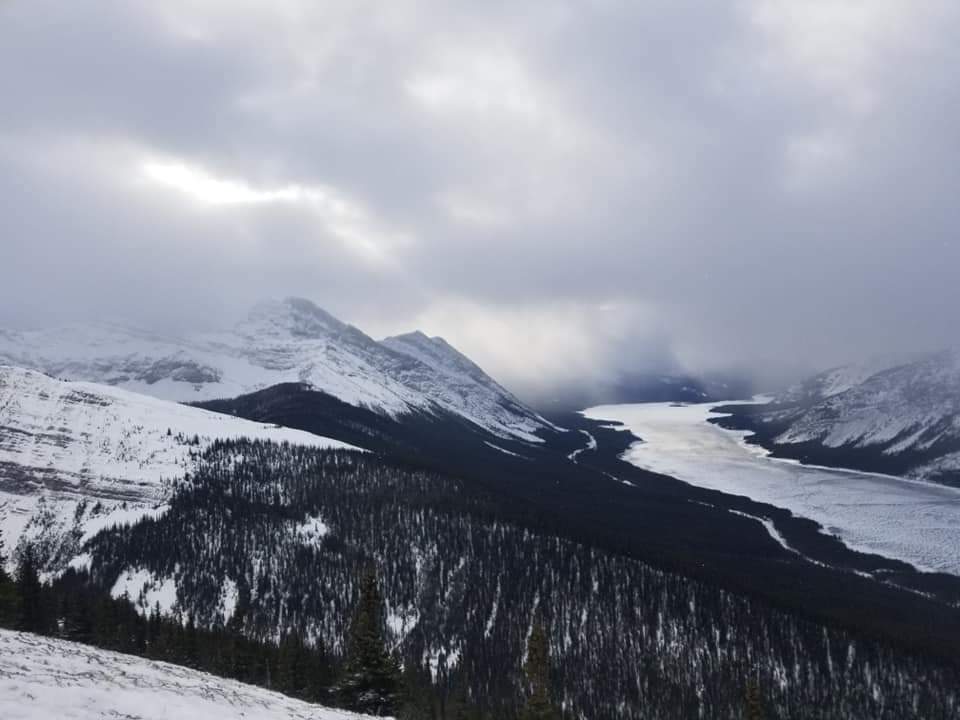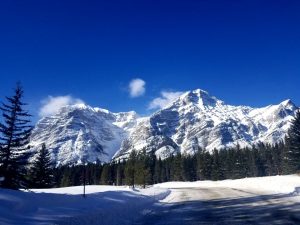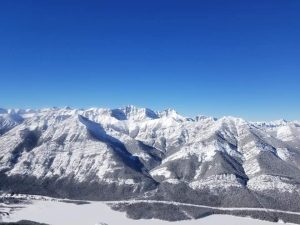What Do I Need to Bring to Canada as an International Student?
Being and international student in a new country, such a Canada, can be challenging and really exciting at the same time. There are a number of things you should be prepared for before you make your big move. Here are some tips for you on what to prepare before you travel.
Make sure you have all your essential documents in place such as:
- A valid passport.
- A valid Canadian Temporary Resident Visa (if applicable).
- A letter of introduction issued by the Canadian Visa Office that approved your Study Permit application. Submit this letter to a Canadian Immigration Officer when you arrive at the border to obtain your actual Study Permit.
- The original Letter of Acceptance from your Canadian University.
- Proof of funds available for your stay in Canada (money transfer, letter of credit, scholarship letter, or other proof).
- Marriage Certificate and/or proof of common-law status (if applicable).
- Any other documents recommended by the Canadian Visa Office where you applied for your Study Permit.
Make sure that you carry all these documents with you. Don’t put these important documents in your checked luggage, and be prepared to show them to any Canadian immigration officer at the border.
Other Documents you will likely want to bring include:
- A list of any items that you are sending separately or which you do not clear through customs when you arrive. Have the list stamped by immigration, if possible.
- Medical and immunization (vaccination) records, translated if possible.
- Medical insurance policy (if applicable).
- Driver’s license or International Driver’s license, and driving insurance records if you plan to drive in Canada.
- A list of important phone numbers.
Personal items to bring with you:
- Medications you may need for the first few months.
- Medical prescriptions.
- Credit card.
- Relevant documents from your previous school (e.g. transcripts, awards, or any other certificates).
- A mobile phone that can be used in Canada. It reduces the cost of your phone plan if you bring your own device.
- Clothing for the different seasons (when you reach Canada you can buy more appropriate clothes for winter).
- Anything memorable such as family pictures, native food, etc. to help you feel more comfortable as you settle in.
By coming prepared you can enjoy this new and exciting experience without worry.
Welcome to Canada! We hope you enjoy your new home.
What You Need to Know About the Skilled Worker Program
The Federal Skilled Worker (FSW) program is a part of the Express Entry process. This program is an immigration option for people who are selected to come to Canada because of their work experience and skills.
Skilled workers are chosen as permanent residents based on their education, work experience, knowledge of English and/or French, and other factors. These things often help them succeed in Canada.
This program has minimum requirements for skilled work experience, language ability, and education. You must meet all the minimum requirements to be eligible.
Work Experience Requirements
To immigrate to Canada under the Skilled Worker program, your work experience must be either Skill Type 0, Skill Level A or Skill Level B on the Canadian National Occupational Classification (NOC).
Your work experience must be paid, full-time (30 hours per week) or the equivalent hours part-time. You must have had that work experience during the last 10 years.
These limits do not apply if you have a permanent job offer.
Proof of Funds
You must show that you have enough money for you and your family to settle in Canada unless you are currently able to legally work in Canada or have a valid job offer from an employer in Canada.
How much money you’ll need to support your family depends on the size of your family. To calculate the size of your family you must include
- yourself
- your spouse or partner
- your dependent children
- your spouse’s dependent children
If you believe you are interested in the Federal Skilled Worker program, contact us today!
Five Tips to Thrive in Your First Canadian Winter
Your first Canadian winter can be a shock, with the fluctuating temperatures, cold winds, and falling snow. Canada gets cold and dry in the winter months; not -5°C cold, but -30°C cold. So, how do you prepare for that and ensure you make the most of the season?
Go in prepared with these five tips for thriving in the Canadian winters.
Warm Outerwear
Not all cold-weather gear is created equal. Whether you will be trekking through the backcountry, or taking on snow-covered city streets, winter can be brutal. That is why your winter coat, whatever the style, whatever the purpose, has to keep you warm. Look for a jacket that is water-resistant at a minimum, ideally waterproof, and rated for temperatures as low as -20°C. Longer cuts help to keep your backside warm when you are moving about and can keep the crisp winds from making their way in.
You will also want to find yourself a pair of waterproof, fleece-lined winter gloves, a fleece-lined toque and a thick scarf to help keep the cold off of your skin.
Proper Footwear
Although snow can be beautiful to look at, it can also be wet, slippery and icy. It is very common for people to slip on ice while walking, especially without appropriate footwear, so make sure you invest in a good pair of boots. You should look for insulated, waterproof boots with higher tops and a sole that has enough tread to prevent slips and falls.
Stay Hydrated
Drinking plenty of water not only helps you stay hydrated, it also helps regulate body temperature and is essential to the function of cells, tissues and organs. Drinking warm liquids such as tea, cider, hot chocolate or coffee will help to keep you warm on chilly days. Drinking water and teas can also give your immune system a boost to keep those unwanted illnesses at bay.
Vitamin D Supplementation
In Canada, limited sun exposure means your body can’t produce vitamin D from November through April. For newcomers transitioning from a warmer, sunny climate, this is a major transition for your body to handle. Vitamin D regulates or influences over 200 genes in your body, playing an important role in overall health. Keep your body happy and the “bugs” away by supplementing with Vitamin D3 this winter season.
Moisturize
The cold winds of the Canadian winter sap your skin of its natural moisture which can cause your skin to dry and crack, or your lips to become chapped. In some cases, it can be painful but is easily avoidable with lip chap and skin creams.
Winter Tires
If you plan to drive, it’s very important to be aware of the weather conditions and have your car prepared for them. In the thick of winter, Canadian roads can be icy and flurries can lead to poor visibility. Winter tires can help to give you better traction on the roads during this weather while slowing down and being aware of your surroundings can help you reach your destination safely.
These are a few tips to get you started off on the right foot, but you can continue to make this an amazing winter by further educating yourself on the things to be aware of with the cold weather and getting outside to enjoy the beauty and fun of the colder season.
10 Tips to Help You Get Settled in Canada
There is an excitement and nervousness that you feel when you first arrive in your new Country. You have arrived in Canada, and now you have so many questions. Where do you begin when it comes to getting settled?
Here are 10 tips which can get you headed in the right direction:
- Find your first home in Canada. Whether you decide to rent or purchase, having your first home will be a major accomplishment in your Canadian journey. Check out these top considerations when looking for a place to call your own.
- Shop for appropriate clothing. If you came from a tropical country, you will need proper winter clothing that will stand-up in colder temperatures. Items such as a winter jacket, winter pants, and winter boots – pick ones that are water proof and have good grip. You will also need gloves, scarves, warm socks and toques. Keep yourself warm and dry during the winter months.
- Open a Canadian bank account. Anyone can open a bank account in Canada if they meet the identification requirements set out in the Bank Act. A bank account lets you write cheques, use automated banking machines (ABMs), get paid through direct deposit, and use a debit or credit card for purchases. You can open an account even if you don’t have a job yet or money to deposit, or if you’ve been bankrupt.
- Apply for your Social Insurance Number (SIN) and Healthcare Card. This very important, and you should do it in your first week if possible. Learn how to apply for your SIN card and healthcare card.
- Find a Family Physician. Family doctors treat a wide range of conditions, and are often your primary care providers. In the long term, that means you will want to build a lasting relationship with a family physician. Developing such a relationship allows them to know your medical history inside and out, helping them make accurate diagnoses, watch for red flags regarding medications and monitor changes in your health through the years.
- Find a specialist or consultant for Newcomer’s to Canada. Building a relationship with an immigration specialist will provide you with a resource who can provide information and direction throughout your Canadian journey. They will give you advice, provide information and resources, as well as suggest next steps.
- Strengthen your English with free courses. If you’re a permanent resident or a protected person, you can take language classes at no cost to you. English is a confusing language with lots of words and phrases that are more common in speech than writing, and are typically restricted to a particular context. Practice will strengthen your English abilities and help you get better at identifying appropriate context. Learn more about these classes.
- Get educational equivalency. Being new to Canada it’s really hard to get your dream job right away. Submiting your Educational transcript for equivalency may be a stepping stone to get you there faster. After you receive your equivalency, take it to any college or university and show your IQAS result. The educational institute will decide what additional courses you need based on this information. The advantage of sending your educational documents to IQAS is you may not have to upgrade any additional English or Math, allowing you to start taking other courses right away.
- Make new friends or contacts. Join local sports groups, find a volunteer job, reach out to your new neighbours, or attends short courses. Meeting new people will help you get settled in your new life and can prove beneficial in a variety of areas from personal to professional.
- Find a job. Looking for a job in Canada is like a diving into a “deep blue sea”. Remember you are in a new country and accepting any job will help you overcome challenges that may come up during your settlement period. Stay motivated to reach your goals and you will be successful.
These stepping stones can give a starting point for settled in Canada and help you along the path to living your Canadian dream.
Dress to Impress and Ace That Interview
You receive an email that you have a job interview, but you don’t know what to wear? These tips will help you go in looking professional and polished.
Stay away from Scents
Many companies have scents free policies; this is because some people have allergies or reactions to certain odours.
Dress in comfortable, professional clothing
There is a common saying “dress for the job that you want, not the job you have”. This means if you are interviewing for an office position, you should dress in business wear, while if you are applying for a labour position, then clean casual clothing may be appropriate. It is important that you look presentable and comfortable because this way you can present yourself properly and are likely to be more successful.
Get ready the night before your interview
- Try on everything that you want to wear one day before your interview. This will keep you from scrambling the day of the interview to find items that fit nicely and will ensure you have the perfect outfit ready to go.
- Polish your shoes.
- Get a haircut.
- Once you have picked out your outfit, press your clothes for a crisp, clean appearance.
Hopefully, these tips help you feel confident and prepared for your interview. Good Luck!
How to Prepare for Your Next Job Interview
We have all experienced the nervousness that comes when you are going into a job interview. To help with your nerves, you probably would like to be more prepared than the other candidates. Here are seven tips to help you prepare for your next interview:
- Learn all about the company you are applying for. This will help you to stand out in your responses to the recruiter’s questions compared to less-prepared candidates. Research the company website, learn the company history, the position you are applying for and learn about your interviewer. It is also a good idea to go into your interview with some thoughtful questions of your own that you have formed from researching the company.
- Know your strengths and weaknesses. It’s important to emphasize what you’re good at, and minimize, but be truthful about, what you’re not. Double-check your skills and qualifications and compare it to the job requirement. This will help you identify which strengths you would like to highlight in your interview.
- Plan what to wear. A study found that 64% of bosses said clothes could be the deciding factor between two similar candidates. Dress appropriately to your interview and give yourself a competitive edge.
- Arrive Prepared. You should bring any items you may need during your interview with you in a professional bag, briefcase or folder. Some items you should have include copies of your resume, a pen or two, a notepad, your prepared questions, a list of references, contact information, and breath mints or gum (although you should spit this out before actually entering your interview.
- Pay attention to your non-verbal communication. Your body language says a lot, even when you’re not talking. It is important to be aware of this while you are in your interview and avoid gestures that give the wrong message. Start the interview with a firm handshake, make eye contact throughout the interview, sit up straight, and don’t sit with crossed across your chest as this can make you seem defensive and guarded.
- Follow-up after your interview. Send the interviewer a personalized thank you letter or email a couple of hours after your interview. The follow-up should express your interest in the position and include specific notes from the interview. This will keep you top of mind for the interviewer as well as show you appreciate the time and effort they put into considering you as a candidate.
By integrating these simple tips into your interview preparation you can ensure you stand out against the competition. Good luck with your interview!
Kicking-Off Your Resume: Three Common Types
It’s time to kick-off your Canadian job search and you need to update your resume for success. There are several basic resume types you can use to apply for job openings; a chronological, functional or hybrid. Each type has its own benefits, so how do you decide which is best? Here we will explain each type to help you make this decision and get started on your resume writing process.
Chronological Resume
This format is based on your professional timeline and is organized by the positions you have held listed from the most recent position to the oldest. Under each position listed, you would include the duties you performed as well as any major accomplishments that occurred while you were in each position. A chronological resume is great for someone who has had a career in a single field and is looking to get a position in the same field.
Functional Resume
This format is skill-based. It is organized by skills that you gained in your previous work relevant to the position you are currently applying for. Functional is best if you recently graduated, have any major time gaps in employment, or are changing careers.
Hybrid (Combination) Resume
This format is a combination of chronological and functional. The chronological is maintained, but this format highlights skills and accomplishments just as much as it highlights professional experience.
Now, with the knowledge you have gained you are ready to choose the best resume type for the job opening and your experience, skills, and achievements!
Get to Know the Alberta Opportunity Stream
The Alberta Opportunity Stream (AOS) is a pathway to permanent residence in Canada for migrants working in Alberta and international graduates who have completed their studies at an approved Alberta post-secondary institution.
If you’re interested in the AOS, there are a number of eligibility requirements you must meet in the following categories’
- Residency status and work permit
- Occupation
- Language
- Education
- Work experience
Each category has specific requirements that applicants must be met at the time your application is postmarked and at the time the Alberta Immigrant Nominee Program (AINP) assesses your application. Here are some of the details you should know before applying.
Residency Status and Work Permit Requirements
You must have a valid work permit for an eligible occupation to apply for AOS. Valid work permits are based on one of the following:
- a positive Labour Market Impact Assessment (LMIA)
- an LMIA exemption for workers based on one of the following exemptions as determined by Immigration, Refugees and Citizenship Canada (IRCC):
- international trade agreements
- workers transferred within a company
- International Experience Canada
- Mobilité Francophone
- Post-Graduation Work Permit (PGWP) holder
Post-Graduation Work Permit holders must also meet additional education and occupation requirements:
- Your current occupation must be related to your field of study in Alberta.
- If you are admitted and enrolled in your Alberta credential program before April 1, 2019, your credential must be issued by an Alberta Advanced Education approved Alberta public and private post-secondary institution and must be one of the following Alberta Advanced Education approved credentials:
- certificate or post-graduate certificate (minimum one year in length)
- diploma program (minimum 2 years in length)
- undergraduate bachelor’s degree
- graduate-level degree
- graduate-level certificate
- graduate-level diploma
Ineligible applicants
The following people cannot apply for the Alberta Opportunity Stream:
- Refugee claimants or individuals involved in a federal appeal or removal process.
- Temporary residents living or working in a province or territory of Canada other than Alberta.
- Migrants living or working in Canada who do not have valid temporary resident status.
Occupation requirements
To be considered for AOS, you must:
- work in an eligible occupation in Alberta
- work in an occupation that matches your previous work experience
If you are unsure whether your occupation is on this list contact our team of experienced RCICs for an initial consultation at info@activeprofessionals.com.
Language requirements
It is important that you are able to demonstrate you meet the following language test score in English or French:
- Canadian Benchmark (CLB) test score required a minimum of 4 for each English language skill, or
- Niveaux de compétence linguistique canadiens (NCLC) test score required a minimum of 4 for each French language skill
If you apply to the AINP under NOC code 3413 (Nurse aides, orderlies and patient service associates), the AINP requires a minimum language test score of:
- CLB of 7 for each English language skill, or
- NCLC of 7 for each French language skill
You must provide your official test results with your AINP application for one of the following language tests:
- Canadian English Language Proficiency Index Program (CELPIP) General Test
- International English Language Testing System (IELTS) General Training Test
- Test d’évaluation de français (TEF)
- Test de connaissance du français (TCF)
Official test results will need to be less than two years old when you submit your application. The AINP will not accept confirmation of registration to take a language test in place of a test result.
Check the federal guideline on CLB/NCLC equivalency for each of the tests.
Education requirements
Eligible applicants
At the time your application is postmarked you must have completed a minimum of high school education in your country of origin.
Post-Graduation Work Permit holders
Post-Graduation Work Permit holders must meet additional education and occupation requirements:
- Your current occupation must be related to your field of study in Alberta.
If you are admitted and enrolled in your Alberta credential program before April 1, 2019, your credential must be issued by an Alberta Advanced Education approved Alberta public and private post-secondary institution and must be one of the following Alberta Advanced Education approved credentials:
- certificate or post-graduate certificate (minimum one year in length)
- diploma program (minimum 2 years in length)
- undergraduate bachelor’s degree
- graduate-level degree
- graduate-level certificate
- graduate-level diploma
If you are admitted and enrolled in your Alberta credential program on or after April 1, 2019, your credential must be on the Alberta Opportunity Stream List of Alberta Advanced Education Approved Post-Secondary Credentials.
Work experience requirements
Your “current occupation” is the occupation you are working in at the time your application is postmarked to the AINP.
Your current occupation must also match your work experience at the time your application is postmarked and at the time the AINP assesses your application.
Qualifying work experience
At the time your application is postmarked you must have either:
- a minimum of 12 months full-time work experience in your current occupation in Alberta within the last 18 months; or
- a minimum of 24 months of full-time work experience in your current occupation in Canada and/or abroad within the last 30 months
- This work experience can be a combination of experience gained in Alberta, in Canada (outside Alberta) and/or abroad.
- Post-Graduation Work Permit holders require a minimum of 6 months of full-time work experience in your current occupation in Alberta within the last 18 months.
This occupation must be related to your field of study in Alberta of your Alberta Advanced Education approved credential at an Advanced Education approved Alberta public and private post-secondary institution.
If you are admitted and enrolled in your Alberta credential program on or after April 1, 2019, and you completed an Advanced Education-approved one-year post-graduate certificate, your occupation must also be related to your previous undergraduate or graduate field of study outside Canada.
Work experience in the qualifying period:
- must have been full-time, for a minimum of 30 hours a week
- must be for the same occupation as your current occupation
- must have been authorized by Immigration, Refugees and Citizenship Canada and with valid temporary resident status if completed in Alberta or Canada
- cannot have been gained while studying in Canada and doing co-op work placements or internships as part of a study program*
*There is an exception to this rule if you are a Post-Graduation Work Permit holder. Work experience completed during paid co-op work terms that were part of a program of study at an Alberta post-secondary institution can be used to meet the work experience criteria with the following conditions:
- the paid co-op work term was full-time (minimum 30 hours per week)
- the work experience is directly related to your current occupation
- the work experience was all gained in Alberta
You must have the required licensing, registration or certification to work in your current occupation in Alberta at the time your application is postmarked and at the time the AINP assesses your application for nomination
If you are working in a compulsory trade in Alberta you must have a valid Alberta Apprenticeship and Industry Trade (AIT) recognized trade certificate.
Eligible job offers
At the time your application is postmarked and at the time the AINP assesses your application for nomination, you must have a bona fide full-time job offer or employment contract from an Alberta employer to work in your current occupation in Alberta.
Your Alberta employer must be incorporated or registered by or under an act of the legislature of a province, territory, or the Parliament of Canada and operating as a business that has an established production capability, plant or place of business in Alberta.
Your job offer or employment contract must be signed by you and your Alberta employer and must offer:
- continuous paid work
- full-time work, defined as a minimum of 30 hours/week
- employment for 12 months or more
- work in your current occupation
- wages and benefits that meet provincial minimum wage and:
- meet or exceed the requirements set out in your LMIA, or
- if you are LMIA exempt, meet or exceed minimum the starting wage for your occupation across all industries in Alberta as set out on the Alis website
- work for an eligible AINP occupation for which you have a work permit that meets AINP work permit requirements
You must meet the terms agreed to in your job offer or employment contract at the time of application and assessment.
Ineligible applicants
The following individuals are not eligible, even if they have a job offer to work 30 hours a week or more in a 12-month period:
- part-time or casual employees, regardless of their working hours
- independent contractors, business owners or temporary agency workers, including individuals listed as Directors, Shareholders or Agents of the Alberta employer on the Corporate Registry System (CORES)
- employees who work in Alberta in a place of employment that is not zoned for commercial or industrial operations, such as a home-based business
- employees who do not work on premises in Alberta, such as those who work in a “virtual” location or serve the employer by telecommuting from a location outside Alberta
Learn How to Write a Canadian Style Resume
You might be wondering why, after sending so many resumes, you have not received a ton of responses yet. As a new immigrant to Canada there are a number of potential differences between the way you are used to writing a resume and the Canadian expectations. Learn these Canadian resume tips to strengthen your job search and improve upon your most important marketing tool in the interview process.
- Keep it short and concise. In Canada, most people have a resume that is a maximum of two pages long. Keep it to one page if are a recent graduate or do not have a lot of experience.
- Include your contact information for the potential employer to reach you. Provide information such as a phone number, email address and mailing address. Don’t attach a photo or any personal information including gender, marital status, or religion.
- Change your resume for each job you apply for. It is important to only include skills and experience relevant to the position such as the proper name of previous companies, where the business was located, and the title of the job that you had and a brief description of the position. Also, include any volunteer work you have done. Do not include personal interest and hobbies unless they are relevant to the position
- Ensure your resume format style is consistent. You should avoid long paragraphs and small fonts, 12 point font is standard. Use an easily readable font and make sure that only one font is used throughout. Ensure your resume format style is consistent.
- Have an up-to-date online resume. LinkedIn is a professional online platform that is frequently used in Canada for networking and the job search process. Many employers’ look-up job applicants on LinkedIn as well as other social media sites like Facebook and Twitter so make sure they are up-to-date and match the professional image you would like to portray.
- Finally, it is always a good idea to have your resume proofread by another person who is fluent in the language for typos, proper grammar, and completeness.
Once you apply these tips, you can start to focus on the interview preparation process. Happy job hunting!
Hidden Gems in Southern Alberta
Regardless of where you reside in Alberta, you can head in any direction and soon find several of Alberta’s jaw-dropping scenes. If you don’t want to spend a lot of money, other than the price of gas, there are numerous gems for you to discover and enjoy.
Glenbow Ranch
Just a short distance from Calgary head west on the 1A Highway and visit the Glenbow Ranch Provincial Park. It is a working ranch that has several paved trails which ideal for biking and hiking. The park offers spectacular views of the Rocky Mountains and the Bow River. Top the day off with a cool ice cream cone from the world renown MacKay’s Ice Cream in Cochrane, just minutes away from the park.
Bragg Creek
Another location just a short distance west of Calgary is Bragg Creek, located in the heart of the foothills. It is ideal for exploring and hiking. Just west of the hamlet is where the confluence of the Elbow River and the Bow River meet. Check out Elbow Falls Provincial Recreation Area, Forget Me Not Pond, or Mclean Creek Recreation Area. They are ideal locations for enjoying a family picnic and hiking.
If you are planning a longer trek continue west into the foothills and the Rocky Mountains and you will be rewarded with some spectacular views of the jagged sentinels and the turquoise blue lakes that are prevalent throughout the mountains. There is a good opportunity to view some of the wildlife such as bears, elk, mountain sheep, goats and deer. Although, if you do stop to take pictures, be very careful not to get too close to the animals.
Kananaskis
Kananaskis country has numerous trails to hike or places to sit beside a waterfall and enjoy a picnic. Head down Highway 40 that runs through the heart of Kananaskis. The highway is closed to vehicles south of Kananaskis Lakes from December 1 to June 15 each year. However, it is a favourite cycling route in May and during the first half of June, when the road is free of snow. Cyclists have the road to themselves during that period. If you can make it to the Highwood Pass, it is worth the work-out, because the view is spectacular. It is a 12.5 kilometers cycle from Upper Kananaskis Lake to the Pass, and it is mainly uphill getting there. The Highwood Pass is the highest paved highway in Canada (2206 m, or 7238 ft).
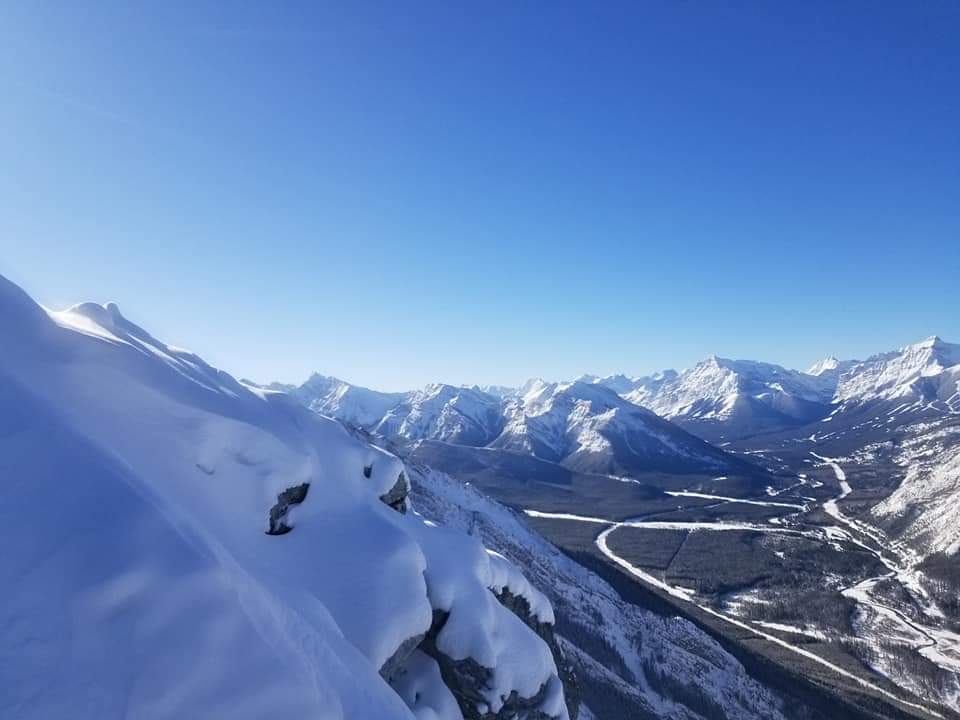
If cycling isn’t your thing, motor down the highway when it is open. Make it a day trip and exit the highway near Longview. From Longview cruise up Highway 22 and enjoy the small-town ambience of Black Diamond and Turner Valley, and then head east back to Calgary. The drive is about 300 kilometers total in a roundabout route that leads you north back to Calgary.
Cruise Cowboy Trail
If you don’t want to go into the mountains, but would rather view them from afar, drive along the Cowboy Trail. The Cowboy Trail, which is Highway 22 located west of Calgary, is 735 kilometers of paved blacktop that stretches from Cardston in the south to Mayerthorpe in the north. The southern drive offers amazing views of the foothills and the mountains and runs through little communities such as Turner Valley, Black Diamond, Longview, and Lundbreck.
Cardston
If you drive south to Cardston, make sure to check out the Reynolds Carriage Museum. 54 kilometers west of Cardston is the beautiful Waterton Lakes National Park which possesses much of Alberta’s natural wonders. The park offers numerous hiking trails and it is especially beautiful in late May and early June when all the wildflowers are in full bloom. The park commemorates the numerous plant species (over 1000) that are found in the park with The Wildflower Festival in June.
South on Highway 2
Another southern route to explore is Highway 2 south of Calgary which leads you through quaint little communities like Okotoks, Nanton, Claresholm and Fort McLeod. Nanton has several museums to peruse. The Bomber Command Museum of Canada is a must-see as well as the Canadian Grain Elevator Discovery Centre and the Museum of Miniatures. There is a fee for entrance to these museums.
A popular stop for tourists is the World Heritage Site Head-Smashed-In Buffalo Jump, just west of Highway 2. It is one of the world’s best-preserved buffalo jumps, and it has an interpretive centre. One can imagine the sound of thundering hooves as large herds of buffalo pound across the wind-swept prairies unsuspecting of their fate that awaited them. The view offers a spectacular vista of the prairies and the rolling foothills.
Highway 2 south ends at Fort MacLeod. There, drivers can go either east towards Lethbridge or west towards Pincher Creek and the Crowsnest Pass. The Crowsnest Pass cuts right through the mountains into British Columbia. You may want to stop in at the Frank Slide Interpretive Centre and view and learn about the mountain that tumbled down on the town of Frank in 1903. It is a solemn spectacle.
Prehistoric Sites
If you are looking to be transformed into another time when dinosaurs roamed the earth, then there are several areas in southern Alberta to view them. Writing on Stone Provincial Park near Milk River in the deep south of Alberta will take you there. Wind-swept hoodoos provide a landscape that is prehistoric. There is camping and hiking in the park as well as guided tours of pictographs and petroglyphs. Beware, there are rattlesnakes in the area.
More of the same prehistoric landscape can be viewed at Dinosaur Provincial Park near Brooks. Camping is available but if you choose to do so you will need to reserve a site. The most notable prehistoric looking landscape is in the Drumheller area, east of Calgary. Before you enter the town be sure to stop at Horsethief Canyon, which offers a stunning view of the valley below. It is worth stopping for a picture or two.
The town of Drumheller is all about dinosaurs, and in fact it has the tallest dinosaur in the world. The World’s Largest Dinosaur, a model of Tyrannosaurus Rex, has a viewing area in the dinosaur’s mouth. There is a price to enjoy that view. Many of Drumheller’s stores and parks feature dinosaur sculptures for public viewing. Just west of town is the world-famous Royal Tyrrell Museum. If you are planning to visit the museum, please check for times it is open and the cost of entrance. Be sure to stop by the Little Church which is on the way.
Instead of going west from Drumheller go east and stop at the Hoodoo Trail. A short hike through the mushroom-shaped hoodoos takes one back to another era a long time ago.
In the deep south east of Alberta, Cypress Hills looms above the bald prairie. It is like an oasis containing a diverse mix of forest, wetlands, grasslands, animals and birds. There is camping and a visitor’s centre, and lots of hiking trails. Some of the views will literally take your breath away.
South-East Alberta
If you make the trek to deep south-eastern Alberta, stop by the Medalta Museum in Medicine Hat where the company used to make clay pots and vases. Their kilns look like giant beehives growing out of the ground.
Red Rock Coulee, a natural area that some people regard as what Mars may look like, is approximately 50 kilometers south of Medicine Hat. Huge red boulders dot the landscape and it is a must-see experience. There aren’t any amenities in the coulee, but it is definitely worth drive if you are in the area.
Alberta has numerous towns and areas to explore, and boundless natural beauty, regardless of which way you head out on the road. Most towns have festivals, fairs and rodeos throughout the summer months and the information is just a click away on a computer or smart phone. It is ours to explore. Get out and enjoy it.










